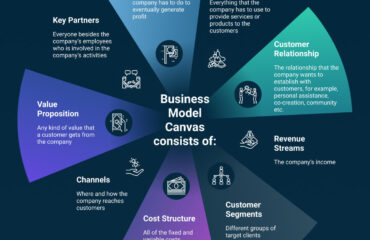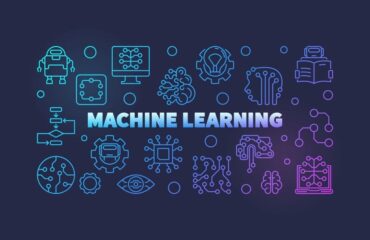
Have always been crazy about driving since I was kid and even today it’s something that I really enjoy…The thrill that you get when the car zooms as you press on the accelerator makes you often forget that driving is actually a means to get you from point A to Point B ….and when you drive in India where no one seems to follow any traffic rules …the blood rush and the glee when you still manage to zoom past someone who just doesn’t give you side by moving into his right lane….the heart attack that you almost get when two wheeler or auto in front of you takes a right turn without any indication at all or when a pedestrian comes out of nowhere and decides this is the exact time and place where he needs to cross the road…or when you suddenly find a huge pot hole in front of you and your brain takes the quick decision on how to avoid it without crashing into the person driving next to you…makes driving so much of an adventure rather than just a chore.
I still remember the time in the 90s when we used to locate places and houses by following directions given by your friends and people you ask on the road…that doesn’t happen anymore since you have Google maps unless you are old school…
But here we are in this disruptive 21st century and they have invented driver-less vehicles and guess what all it can do!
1. Anticipates the speed of the vehicle in front of you and adjusts your speed
2. Pushes up the throttle if you want to go faster and moves into the next lane to go past the driver in front of you
3. Anticipates braking and movements of the vehicles around you and moves accordingly
4. Keeps a tab on the traffic signals as and when they come and stops or moves as per the situation
5. Watches for pedestrian movement and stops or moves the car as per the situation
6. Watches for directions but that has been kind of taken care by Google maps and other maps that we have got used to
The more you think about it the more you feel less comfortable about it…Driving is perhaps one of the best cases of human brain, hand -eye and feet co-ordination…
When you think about it there are several occasions particularly when you are on a free highway where your sub conscious mind takes over your driving where you are thinking of something but your hand – eye and feet co-ordination continues to happen seamlessly.
Can a driver-less car do all this? Let’s figure out how they will operate in more detail
Different self-driving cars are capable of different levels of self-driving and are often described by researchers on a scale of 0-5 in terms of layers of autonomy
· Level 0: All major systems are controlled by humans
· Level 1: Certain systems, such as cruise control or automatic braking, may be controlled by the car, one at a time
· Level 2: The car offers at least two simultaneous automated functions, like acceleration and steering, but requires humans for safe operation
· Level 3: The car can manage all safety-critical functions under certain conditions, but the driver is expected to take over when alerted
· Level 4: The car is fully-autonomous in some driving scenarios, though not all
· Level 5: The car is completely capable of self-driving in every situation
So how does a driver-less car manage to replicate what a human does while driving?
1. Self-driving cars create and maintain an internal map of their surroundings, based on a wide array of sensors, like radar. laser beams, radar, high-powered cameras, and sonar.
2. Software then processes those inputs, plots a path, and sends instructions to the vehicle’s “actuators,” which control acceleration, braking, and steering.
3. Hard-coded rules, obstacle avoidance algorithms, predictive modeling, and “smart” object discrimination (i.e. knowing the difference between a bicycle and a motorcycle) help the software follow traffic rules and navigate obstacles.
Self-driving cars can be further divided into as being “connected” or not, indicating whether they can communicate with other vehicles and/or infrastructure, such as next generation traffic lights. Most prototypes presently being developed do not have this capability.
How do these look in the actual prototypes being developed?
Let’s take the example of the Google car…
The Google Car prototype is equipped with eight sensors.
The most noticeable is the rotating roof-top LIDAR – a camera that uses an array of either 32 or 64 lasers to measure the distance between objects, building up a 3D map at a range of 200m and allowing the car to “see” hazards. The car also sports another set of “eyes”, a standard camera that points through the windscreen. This looks for nearby hazards like pedestrians, cyclists and other motorists, as well as reading road signs and detecting traffic lights. Speaking of other motorists, bumper-mounted radar, already used in intelligent cruise control, tracks other vehicles in front of and behind the car.
Externally, the car has a rear-mounted aerial that receives geo-location information from GPS satellites, and an ultrasonic sensor on the rear wheels monitors the car’s movements. Internally, the car has altimeters, gyroscopes and a tachometer (a rev-counter) to give even finer measurements on the car’s position, all of which combine to give it the highly accurate data needed to operate safely.
Using these arrays, the Google Car can read the road like a human, but these sensors come with their own limitations.
What are the limitations?
Autonomous cars simply replace the human eye with a camera, leaving them vulnerable to extreme sunlight, weather or even defective traffic lights. In current autonomous cars, the way this selection of pixels is analysed could be the difference between a safe journey and death.
So how do we overcome this drawback?
Connected Cars could be the answer…
In connected cars, car to car and car to traffic infrastructure is connected so that the entirely connected system can addresses individual shortcomings that may arise.
To become a viable solution, these systems will be required in every vehicle, including those still used by humans. It’s likely that emergency vehicles like ambulances and police cars will continue to use human drivers, so they’ll need a method of communicating with the autonomous cars around them…This concept is not being tested in any of the prototypes that are presently in testing…
Some of the other issues which also needs to be addressed before driver less cars really take off are as below
1. The human problem
Although autonomous cars will need better, more connected infrastructure to function effectively, they still face a larger, more unpredictable factor –Humans as both drivers and pedestrians and dealing with our unpredictable behaviour represents a significant challenge for the technology. Guess India would be the last place they would roll-out such cars!!
For example, there was a widely reported accident with a driver-less Google car which was being tested…
Analysis of the accident showed that the incident was caused by a human driver’s failure to stop. While correctly waiting at traffic lights, Google’s self-driving car was hit by an inattentive driver and, despite its sophisticated array of sensors, there was little it could do to avoid the incident.
2. Dealing with pedestrians and other human drivers
Autonomous cars need to understand the way pedestrians behave, while also mimicking the behaviour they’d expect from a human driver. What is suggested as a solution is understanding how humans react to these situations and get the driver less cars coded in the same way
However, programming also comes with a risk. By making their behaviour predictable, autonomous cars could be vulnerable to manipulation by third-parties.
3. Lack of globally uniform systems
What’s more, with each car manufacturer racing to develop its own self-driving solution, the behaviour of autonomous cars is becoming more and more complex and not standardised.
But as we have seen for earlier experiences, finally it will be one technology which will get adapted and that is when the industry will grow…
4.Hacking
Autonomous cars will pack in a greater range of systems than ever, but the increased tech will also make them more vulnerable to hackers. Although it may seem an issue for the future, car-hacking is already happening.
One of the biggest disadvantages will be loss of jobs for the millions of people who are presently employed as drivers all over the world…
But let me not be a pessimist just because I love driving so much and touch on the advantages…
One of the biggest problems that we are facing today is the inability of road and other infrastructure to keep pace with the growth in number of cars. This is one area where experts are expecting rapid benefits.
Once a car is being run as a driver-less car then it becomes part of a pool of cars available anywhere. So just like today we go online and book a Uber the same can be done with much more efficiency with driver-less cars since they are totally system driven.
This will really enable reduction in the total number of cars on the road and address the traffic issues that we have today to a greater extent. Technically lesser traffic also makes it safer to be on the road.
Self-driving cars are expected to bring in $7 trillion globally by mid-century, according to a report by Intel Corp. and Strategy Analytics Inc. That depends in part on persuading urban consumers to give up privately owned cars and depend instead on autonomous fleets offering “mobility as a service.”
So, till then let’s continue to enjoy driving as we know it today…



